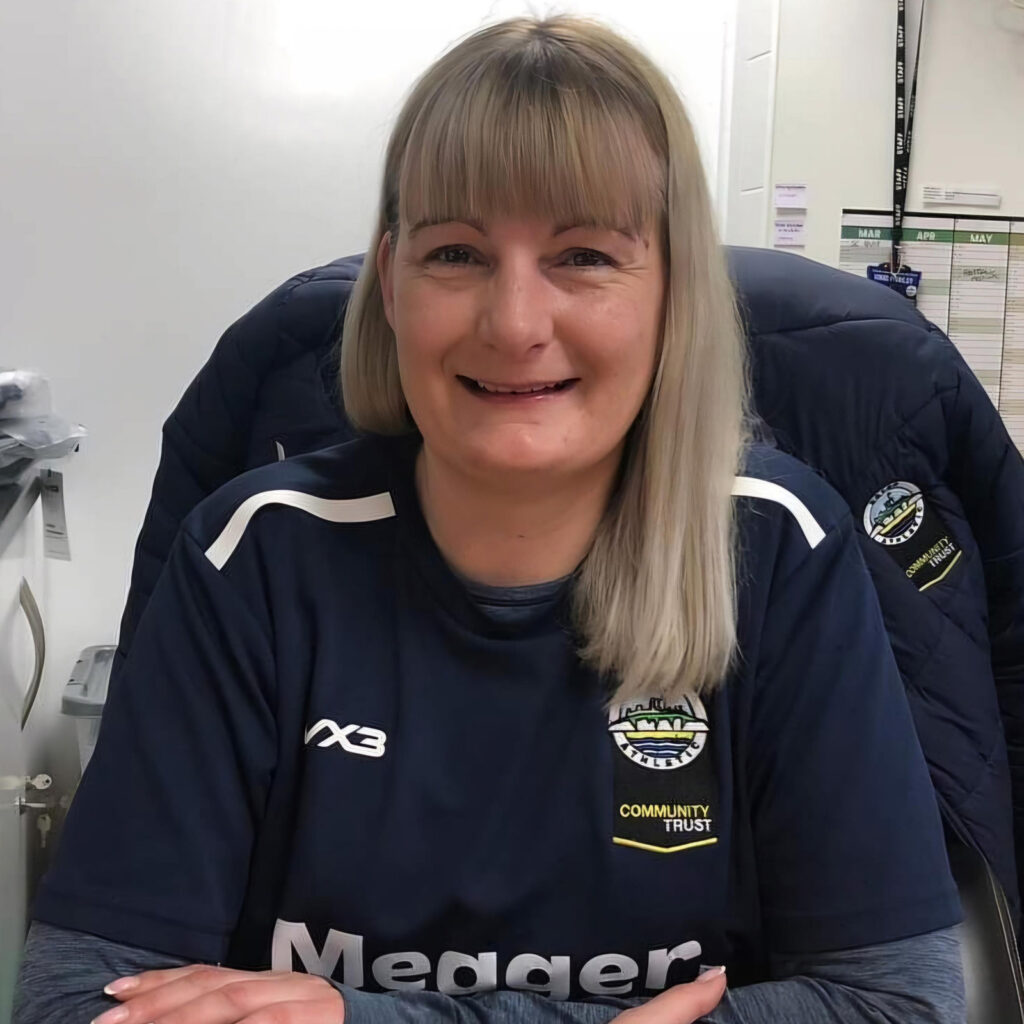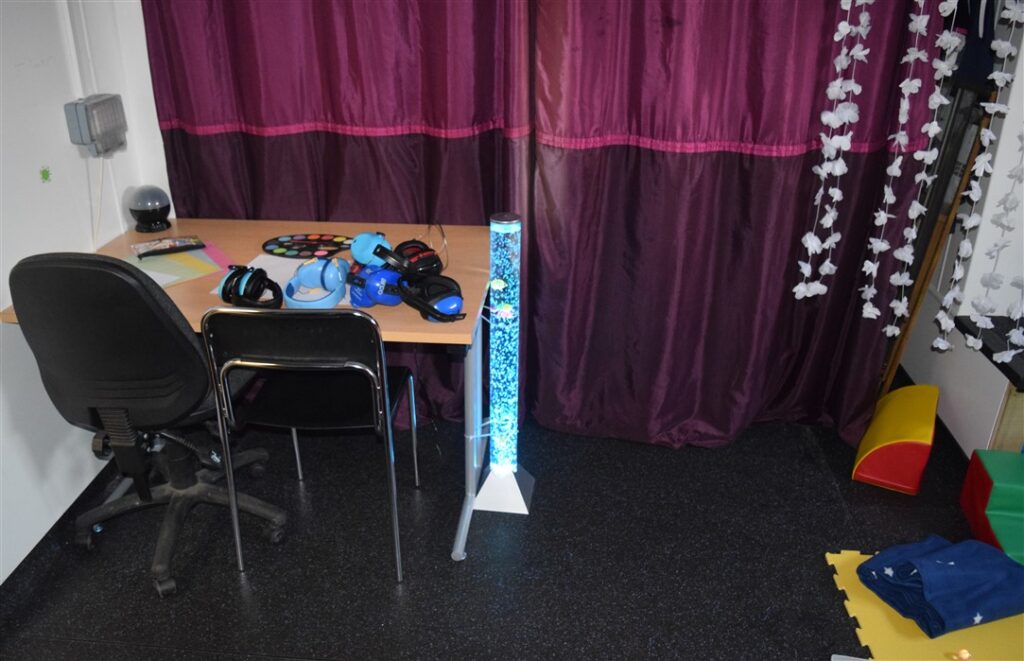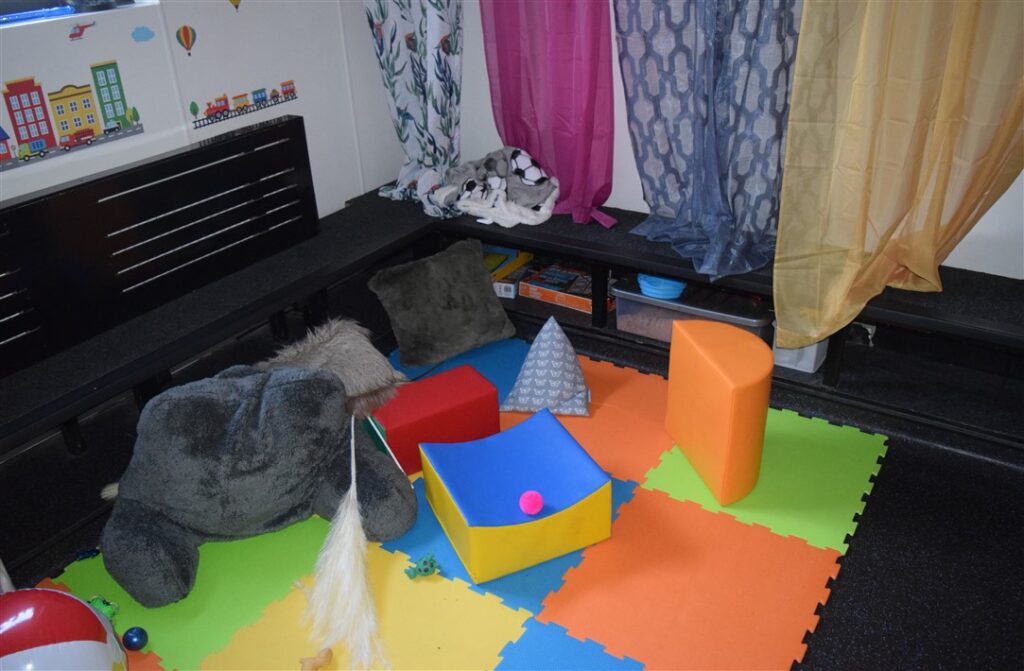How did non-league club Dover Athletic launch a sensory room?

Dover Athletic are one of the few non-league clubs to have a sensory room at their home stadium, providing sensory support to fans on matchdays.
The Whites are currently vying for promotion from the Isthmian League Premier Division, which is the third tier of non-league football in England, and their sensory room’s grand opening took place on this day – 4 November – in 2023.
The opening saw 50 guests, including several children and families with autism, invited to the Crabble Athletic Ground for Dover’s match against Hampton & Richmond Borough. Team captains and match officials wore ear defenders on their way out to the field along with the game’s mascot Charlie, and the guests were able to enjoy the match with full access to the hospitality suite and new sensory room.
A year on from this memorable day, we caught up with Vikki Pawley – the club’s Community Engagement and Inclusion Officer – to discuss the impact the sensory room has had around the football club and in the community.
Firstly, how did the opening of a sensory room come about?
It was already something that was sat on my desk before I started. I spoke to the fan who made that suggestion, Patrick Verrill; I was aware of his son who I had seen struggling slightly with the matchday experience. It was just one of those things – he had been fine one season and then on the flip of a game he couldn’t cope and needed somewhere to go. We discussed how it could work, and it evolved.
What was the process of then turning the sensory room into a reality?
We approached the chairman and trustees about it and they were more than happy for it to be done, so then it was about consulting with different people around what the room needed.
I came into this role from an education background where we worked with a lot of children with Special Education Needs (SEN), so I had some awareness of what needed to be in the room and what didn’t. There is a range of cushions, toys, a sand pit, colouring, there’s all sorts in here and they can get out whatever they need and don’t have to tidy up afterwards.
How did you decide on the location of the sensory room?
The room I’m in now, which is my office during the week, is the sensory room on a matchday. It’s quite a large room, one of the old dressing rooms before they moved to the new family stand. This works because we had this space available; for other clubs it might not be easy because all grounds are different, and if you have not got the space that’s already available or it’s a space that needs developing then there are going to be more costs involved. We were very fortunate that this could be a space that could be adapted very easily and it doesn’t impede on my working day.
How do people access the sensory room on a matchday?
Anyone who wants to use the room can use the room at any point. Outside the building and at the end of the corridor there are signs that say where the sensory room is, and we also provide passes so people can access the room without needing to ask. The stewards are good, they are aware and can show directions to it also.
On a matchday, I might go into my office for something and there will be people in there and I’ll ask if everything is OK. It’s getting used for the purpose of what we put it together for.
How has adding the sensory room improved the matchday experience?
There’s lots of sensory things that are going on all the time: supporters who have drums, singing, food outlets, weather; there is always going to be something somewhere that might upset someone. This is a space for someone who might need that five- or 10-minute break to self-regulate. I have seen children use it and they then go back out and enjoy the rest of the game, or they might just need to pop in every 20 minutes.




Has the sensory room led to a greater awareness of autism around the club?
The fans are proud that this is something we have; sometimes I have people pop into the sensory room – people who don’t have a need for it but are interested in understanding what this room looks like. But I do try to promote it once a month because it would be great if everyone knew it was accessible to them as and when they needed it.
It’s not just only for our home fans – if there are away fans coming to a game, the sensory room means they can bring a child who would like to watch football, but they don’t know how they would react. It’s taking the pressure off them if going to a football match might be too much.
Are there other ways in which the club strives to be more inclusive to autistic people?
We also have our recreational football sessions that we run on a Saturday and that’s open to anyone, and we do have children with additional needs coming to that. We have plenty of coaches on a Saturday and we can tailor those sessions, so if there’s a couple of children who are struggling, we can take them off into a smaller group or individually and get all the equipment out. We might make an assault course or use pop-up goals to make tents; we are trying to give the opportunity for people to at least come and try to play football.
It doesn’t always have to be the outcome of a sporting goal, even if it’s the fact that the child comes back every week. Maybe the first three weeks they’ve spent it crying and not wanting to leave mum or dad, but by weeks four, five and six, they are joining in without any anxiety.
You have an open-minded approach to your recreational sessions, and to creating the sensory room for matchdays. What is the overall goal from thinking more inclusively?
It’s about making the football club, and the space that we have in our ground and on our pitches, an environment where children know they are safe – whatever they are here to do. There is somewhere they can go or someone they can see if they need it.


